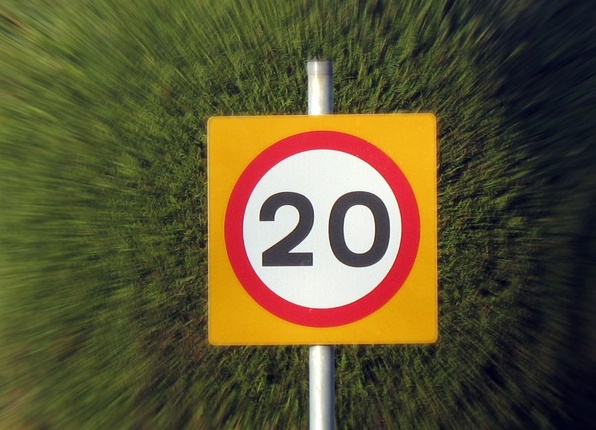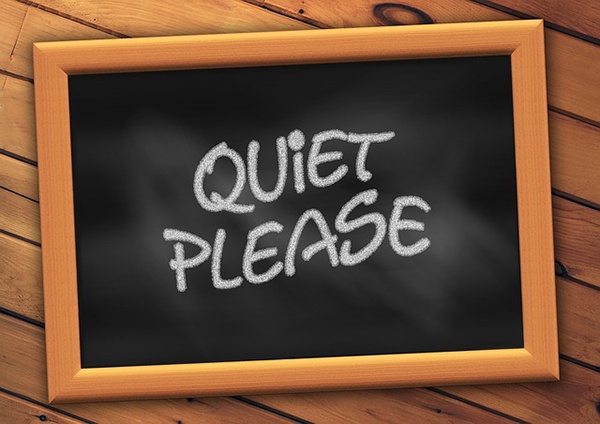
It's important to learn how to use official SAT practice tests as study resources because they will give you the most accurate reading of what to expect on the real SAT. If you only have twenty hours to prepare, this guide will teach you how to use practice tests to your best advantage within that limited time. I'll walk you through why SAT practice tests are important and how you can use a step by step twenty hour plan to get the most out of them.
Why Are SAT Practice Tests a Good Tool for Short-Term Prep?
Practice tests can be very helpful if you only have a short time to prepare for the SAT. You’ll experience larger point gains through enhancing your understanding of the overall format of the test than you would through focusing solely on specific content issues. Practice tests will introduce you to the time constraints and question types you’ll see on the real test, so you’ll be prepared to deal with the time pressure and confusing wording that tends to stump students who have less experience with the SAT.
The benefits of practice tests increase even further if you can evaluate your mistakes accurately and take steps to fix them. Although you don’t have much time, higher level weaknesses in test-taking strategy can be fixed relatively quickly. Practice tests give you the power to recognize these weaknesses and take simple steps to eliminate them.
How to Prep for the SAT in 20 Hours Using Practice Tests
Here's a step-by-step guide to using practice tests in a twenty hour study plan. You can adjust the times to your personal needs, but this plan provides a rough outline of how to go about the process of taking practice tests and evaluating your mistakes.
Step 1: Take a Baseline Test (4 Hours)
You will need to take an initial practice test to see where you stand score-wise and diagnose your weaknesses. Make sure that you use the appropriate time constraints and set yourself up in a quiet environment. You should also print out the test so that you can simulate realistic testing conditions.
 Print out this picture and give it to your family when you're taking an SAT practice test.
Print out this picture and give it to your family when you're taking an SAT practice test.
Step 2: Analyze and Fix Your Mistakes (4 Hours)
Now that you’ve taken a practice test, you can look at your incorrect answers to figure out your biggest problems. You won’t have time to fix all of your issues on the test in this short study period, but you can tackle some of the most common mistakes at a higher level.
Take note of whether you messed up on certain sections in particular. If you find that you had a lot of difficulty on one part of the test, you should devote some time to figuring out what went wrong and how you can fix it. There may be a few different issues that need addressing if you hope to raise your scores significantly. Here are a couple of scenarios you might encounter and some short-term strategies for improving your performance.
Running Out of Time
If running out of time is an issue for you, you will be able to improve your performance through greater familiarity with the test material and smarter test-taking strategies. Do you tend to get stuck on difficult questions? On your next practice test, skip any question that you can’t figure out within 30 seconds on the Reading and Writing sections or within a minute on the Math section. You shouldn’t waste too much time struggling on hard questions. If you do, you run the risk of missing easier questions at the end of the section and losing major points!
If you’re running into problems with time on the Reading section, you might try switching up your strategy. Most students instinctively read the passages on the SAT closely, but this can lead to time issues if you’re a slower reader. Try skimming the passages instead (read the introduction and conclusion paragraphs and the first and last sentences of each body paragraph). You should be able to answer most questions just by skimming, and it will save you a ton of time. If you find that you don't know the answer to a question, you can always go back and read specific parts of the passage more closely.
Another method that might work for you is skipping the passage altogether and heading straight for the questions. On the SAT, you’re given line numbers for most of the passage-based reading questions, so you can just read the lines indicated in the questions rather than the entire passage.
For more strategies to combat time management issues on the SAT, see these articles with tips for how to stop running out of time on Reading and Math.
 Ah, time, the forever-ticking demon that haunts us all.
Ah, time, the forever-ticking demon that haunts us all.
Careless Mistakes
If you made a lot of careless mistakes, you might be rushing or not reading the questions closely enough. A careless mistake is an incorrect answer to a question that should have been easy for you. It might be a result of misreading what the question was asking for or being overly confident and not thinking it through.
Issues with careless mistakes can be fixed through more practice testing (yay!) and awareness of your time management. Careless mistakes are also easy to spot if you double check your answers for each section. You should make a point of doing this if you have any extra time at the end!
Question Misunderstandings
Did you find that you genuinely misunderstood some of the questions on the test? If you're running into these types of mistakes, you should continue to practice similar questions. Make sure you fully understand why the correct answer makes sense. Once you know the solution, try working through the question or problem on your own to see where you might have gone wrong. This strategy will help train your brain to handle similar questions in the future.
Lack of Content Knowledge
Since you don’t have very much time, gaps in your content knowledge aren’t going to be easy to fill. If there are minor things you don’t know (such as a mathematical formula or grammar rule that you need to memorize), you can review them before the next practice test. If you’re struggling with an entire content area, like functions or geometry, you might not have enough time to fix those problems. Focus on surface-level content issues to maximize your point gains in this short time window.
 Make sure you're content with your content knowledge.
Make sure you're content with your content knowledge.
For more tips on how to review your mistakes, check out this article. You might not be able to comb meticulously through all the questions you got wrong, but there are some useful strategies that can still be implemented by students who are pressed for time.
Step 3: Repeat Steps 1 and 2 (8 Hours)
Now that you’ve reviewed your mistakes and tried to fix most of the issues you had on the last test, you can take another practice test to see whether you’ve improved. Go through the same process with this test as you did on the previous one. If you find that you’ve improved significantly, that’s a good sign! You may be making different types of mistakes now, so it’s worth it to do another analysis.
If you didn’t improve, you should consider how you went through the process of fixing your mistakes on the first test and whether you need to implement different strategies.
Step 4: Take a Final Practice Test (4 Hours)
After reviewing and fixing your mistakes on the second practice test, you should take a final test to prepare for the real SAT. You can take this practice test a couple of days before your test date. Make sure you keep all the strategies in mind that you developed from reviewing your other practice tests, and don’t change your methods between now and the real SAT.
Total Time: 20 Hours!
 Wahoo! You did it!
Wahoo! You did it!
Will 20 Hours Be Enough for Me?
Depending on how much you need to improve, 20 hours might be more than enough time, but it's not an ideal amount of prep time for students who are looking for significant score improvements on the SAT. You should start preparing earlier if you hope to raise your scores by more than 200 points or are looking for a perfect score. If you're hoping to improve by 300 points or so, you may be looking at 80 hours of studying as a more realistic amount of time. Take a look at this article on how long you should study for the SAT for more information. You can also read some of these resources to learn more about why your studying for the SAT now will pay off in the future.
That being said, anyone can make moderate improvements in twenty hours if she's honest about her mistakes and takes practice tests under realistic testing conditions. If you’re new to the SAT, you will probably see some big changes in your scores from the first practice test to the third. As a general rule, however, starting your studying earlier will be better for your mental health and your performance on the test!
What's Next?
Worried about low SAT scores? Here are some prep and test-taking strategies specifically targeted towards low scorers that will help you improve!
Do you have procrastination issues when it comes to SAT prep? Find out how to combat procrastination in preparing for standardized tests.
If you have a bit more time on your hands and want to learn how to get the best scores possible, read PrepScholar's ultimate guide to SAT prep.
Want to improve your SAT score by 160 points? We have the industry's leading SAT prep program. Built by Harvard grads and SAT full scorers, the program learns your strengths and weaknesses through advanced statistics, then customizes your prep program to you so you get the most effective prep possible.
Check out our 5-day free trial today:
Have friends who also need help with test prep? Share this article!

Samantha is a blog content writer for PrepScholar. Her goal is to help students adopt a less stressful view of standardized testing and other academic challenges through her articles. Samantha is also passionate about art and graduated with honors from Dartmouth College as a Studio Art major in 2014. In high school, she earned a 2400 on the SAT, 5's on all seven of her AP tests, and was named a National Merit Scholar.


































 Holly R.
Holly R.